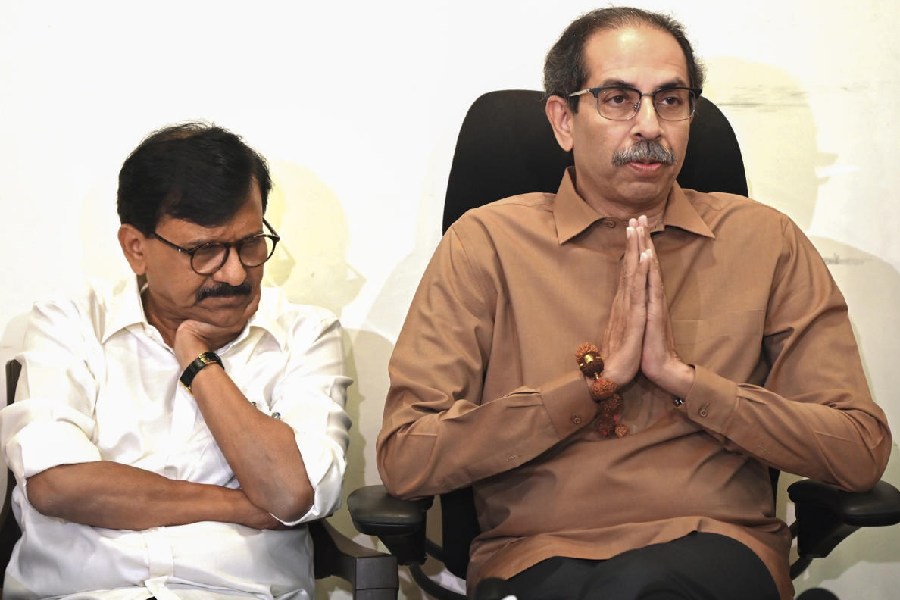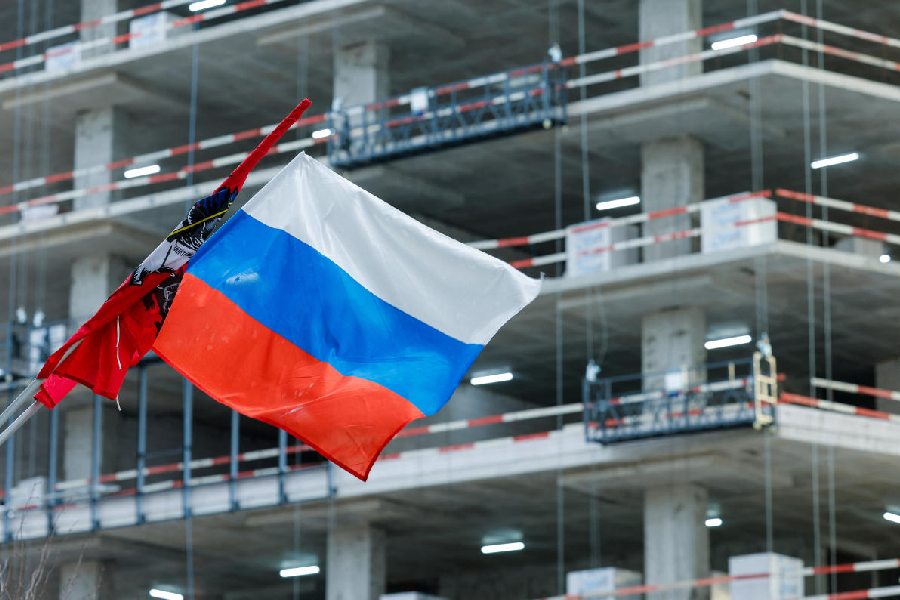The Congress has asked the BJP leadership to clear its stand on coalitions following its strident posturing against an evolving Opposition axis although the ruling party itself has alliances with over 40 others across the country.
Prime Minister Narendra Modi has been criticising the coalition of Opposition forces as contaminated (mahamilawati) and portraying himself as the lone warrior against the group, overlooking the indisputable reality that the BJP heads a much bigger combination than the Congress.
The word “mahamilawati” resonates in the BJP’s theme song as much as Pakistan does.
“The Prime Minister and the Blog Minister (Arun Jaitley) should decide on which side of the ‘alliance argument’ the BJP stands,” Congress communications chief Randeep Surjewala said in a statement.
“If the BJP stands at the ‘mahamilawati’ argument as espoused by Modi, their argument falls flat because a 30-member NDA of 2014 has become a 42-member alliance in 2019. Will they call it mahamilwati?”
Surjewala pointed to what he described as the “rank opportunism” and the “marriage of convenience” that had propelled the BJP-led coalition to grab power at any cost, recalling the ideological incompatibility and political conflicts that marked the relationship.
He said the Congress embraced partners based on ideological affinity while the BJP allied with any group only for power, referring to the diametrically opposite positions of the Peoples Democratic Party and the Rashtriya Swayamsevak Sangh.
The PDP has nothing in common with the BJP but the two had come together in Jammu and Kashmir to grab power. The alliance has collapsed since.
Except for the Shiv Sena, no ally has any ideological similarity with the BJP and none of them has ever endorsed the Sangh’s philosophy despite decades of association.
All these allies have asserted their secular identity and pretended to have aligned with the BJP either on the development plank or that of anti-Congressism.
In Bihar, Janata Dal United leader Nitish had mounted the most offensive attacks on the RSS-BJP despite a long and peaceful cohabitation when he aligned with Lalu Prasad’s RJD and the Congress before the last Assembly elections in the state.
He was the first politician to give a public call for an “RSS-mukt (free) Bharat” but the BJP digested the humiliation and embraced Nitish again to unsettle the secular alliance.
Surjewala in his exhaustive statement recalled how the Shiv Sena had abused the BJP over the past five years, even using Rahul Gandhi’s “Chowkidar chor hai” slogan to publicly embarrass Modi.
Some parties, such as the Biju Janata Dal in Odisha and K. Chandrashekar Rao’s Telangana Rashtra Samithi, Surjewala said, could not muster the courage of acknowledging their tacit understanding with the BJP because of ideological revulsion.
He also alleged that some smaller outfits were arm-twisted into supporting the BJP.
Modi’s acerbic attack on coalition politics — publicly suggesting that partnership with smaller parties was akin to contamination — is indeed a double-edged weapon that can hurt the BJP as it weakens.
While the Congress intends to highlight this to blunt Modi’s “me-versus-the rest” claim, it is also part of the post-poll strategy because of an assessment that the BJP will need more allies to sew up a majority.
By highlighting Modi’s aversion to coalition politics, the Congress wants to caution prospective allies.
Modi’s contemptuous attack on coalition politics betrays ignorance of history as the BJP is the only party in India that used alliances not only to expand its clout but also to acquire political legitimacy. The RSS and the party’s previous avatar, the Jana Sangh, had suffered an extreme crisis of legitimacy after the assassination of Mahatma Gandhi and for a perceived communal agenda.
Following the Emergency, the Jana Sangh had used the overwhelming anti-Indira Gandhi sentiment to form a grand coalition that came to power in 1977.
The Jana Sangh had to submerge its distinct identity into the Janata Party but the reservations about RSS ideology persisted and the experiment collapsed within a few years on the question of dual membership of the Sangh and the Janata alliance.
Many stalwarts of the Janata Party were opposed to the membership of the RSS, which showed that political exigencies hadn’t blurred ideological faultiness despite togetherness.
In 1989, too, the coalition of opposition forces against Rajiv Gandhi couldn’t survive because of differences with the BJP’s separate agenda.
Atal Bihari Vajpayee finally forged a grand coalition in 1999 after the bitter experience in 1998 but he had to put the BJP’s three core issues — the Ram temple, a uniform civil code and Article 370 — in cold storage.
George Fernandes, the architect of the NDA in 1999, used this pre-condition to attract regional parties. Neither these contentious issues, nor cow vigilantism or anti-Muslim propaganda, dominated the political discourse during the Vajpayee regime, indicating that the BJP could compromise with even its basic identity for power.
It was during the Vajpayee era that the BJP acquired legitimacy and even L.K. Advani tried his best in 2009 to project a secular face and a positive agenda.
Modi, however, got absolute majority and the allies lost control over both governance and the political narrative. They are now dominated so ruthlessly by Modi and BJP chief Amit Shah that the “mahamilawati” smear campaign didn’t evoke any responses from them.
The Congress hopes they will discover their voice the moment Modi gets weakened.













